
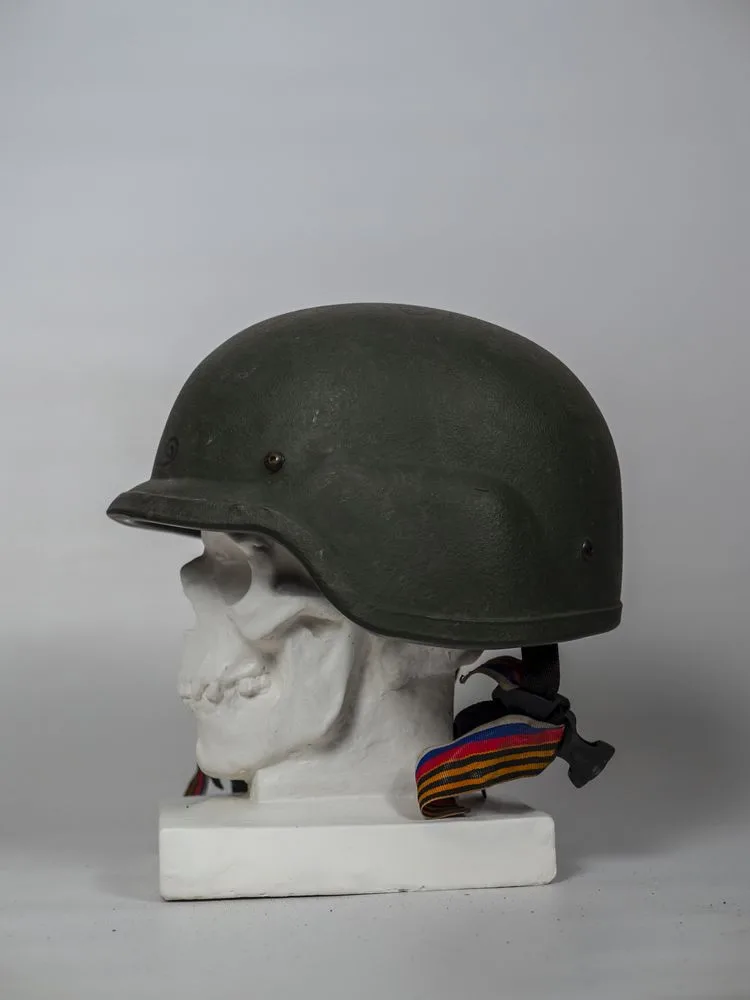
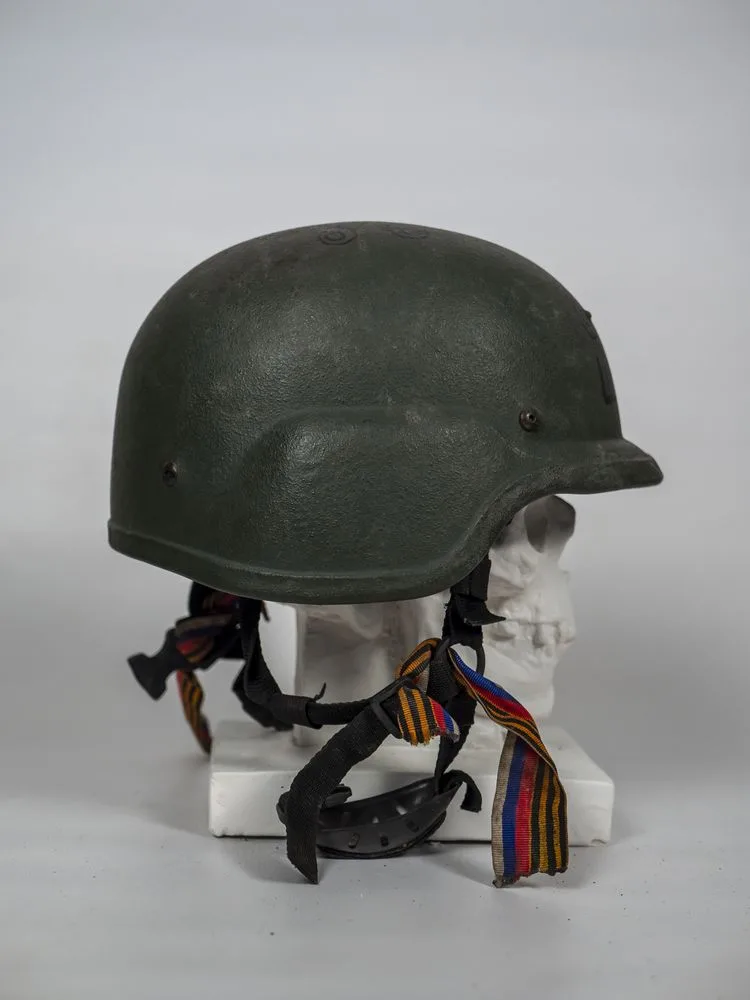
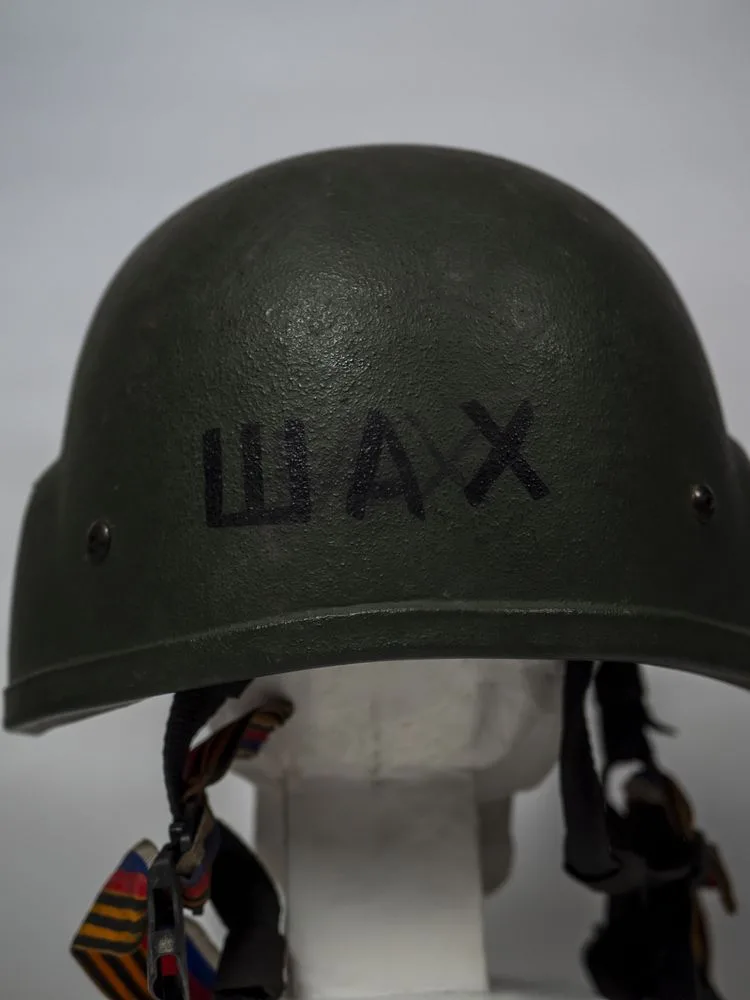
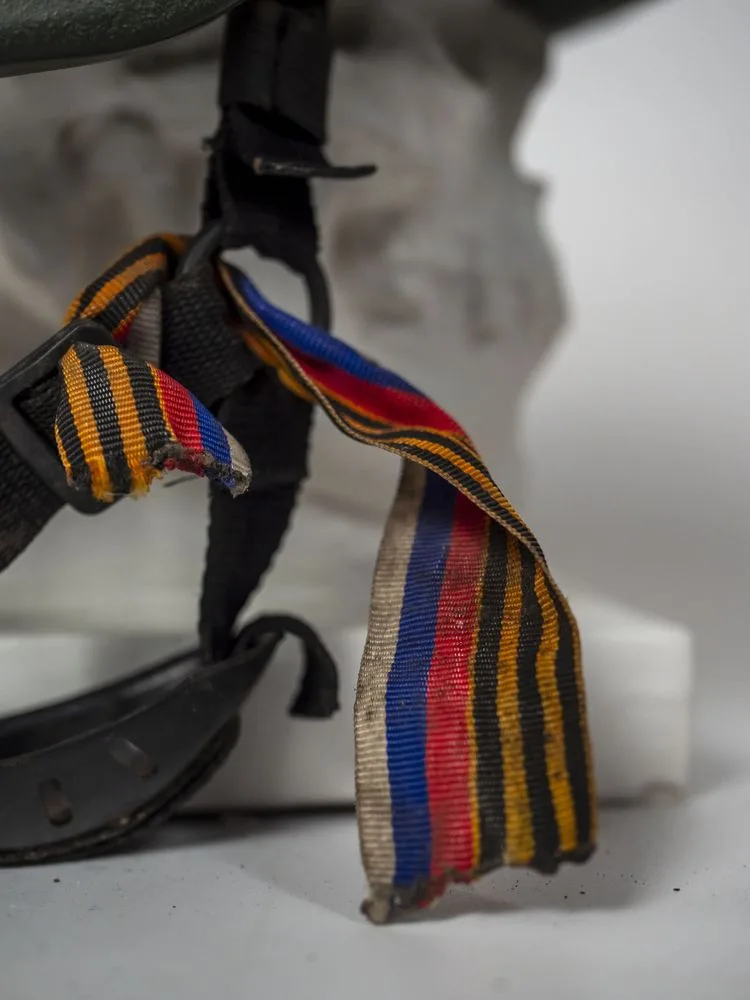


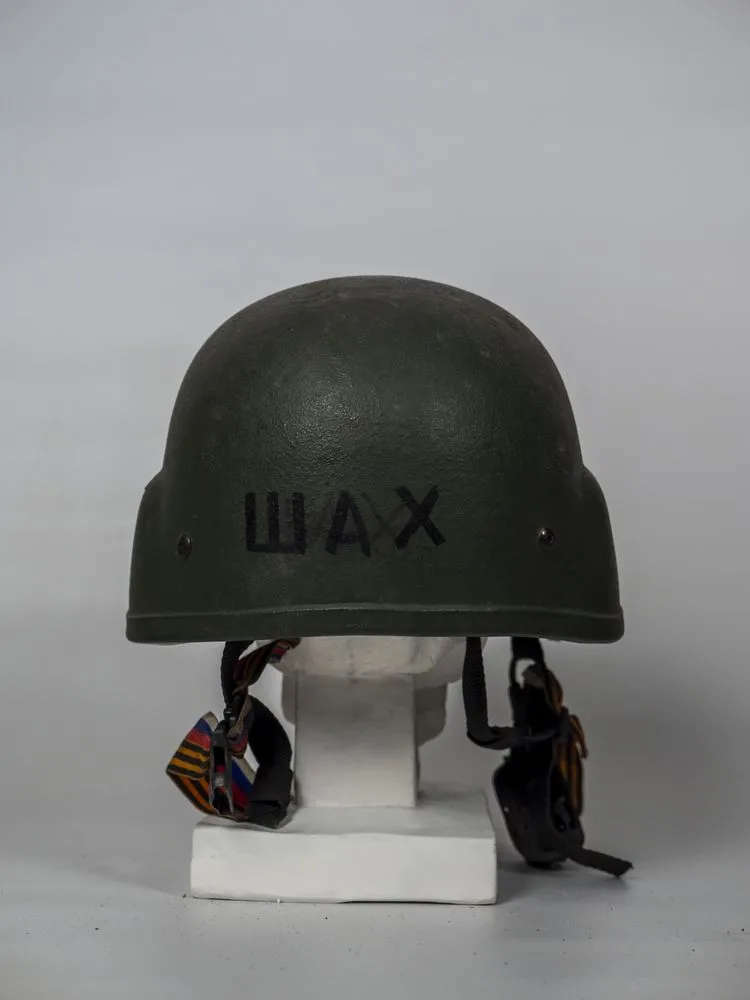
Kevlar helmet “Kolpak-100”
Why do I love collecting helmets of occupiers so much? Because they provide valuable insights into the development of the terrorist country’s defense industry. The second-largest army in the world was confident that Ukraine would be an easy target, so they didn’t pay much attention to the helmets their soldiers wore. They often wore old, steel helmets, with rare instances of trophy Kevlar helmets. But over time, the steel helmets from 1968 disappeared, and various modifications of Kevlar helmets began to appear.
By the end of 2023, I would highlight the following types of helmets worn by Russian soldiers:
1. Old ones from stocks. Starting from the 2000s, Russia began experimenting with Kevlar. Due to budget constraints at the time, they copied old Kevlar helmets from the USA and Europe, resulting in poor quality. However, these helmets did end up on the heads of occupiers and are present in our collection (very rare specimens).
2. Domestic production. This mainly includes general-issue modern Kevlar helmets like 6B7-1M and 6B47, as well as a humorous modification of the 1968 steel helmet called “Kolpak-20.” These are supposedly produced by the Russian defense industry, although I can’t say they are very common.
3. Samples from China. Here, there are a wide variety of different specimens, counterfeit helmets from the USA, Europe, etc. They are ordered from AliExpress, imported from China, with the labels changed to Russian and claimed to be Siberian production, even though the certificates and quality are Chinese.
The Kevlar helmet “Kolpak-100” from the company Special Materials appeared on the battlefield not too long ago but in large quantities. I doubt that this helmet is manufactured by Special Materials; I’m more inclined to believe it’s imported from China. Several versions of these “Kolpaks” exist, differing in shape and suspension systems. Even on YouTube, during tests of this helmet by the company, a different helmet was shown, not the one featured on the company’s website.
It’s unlikely that this helmet offers much protection, but we know the worth of the life of an ordinary occupier.
As for this particular helmet, it was worn by an occupier known as “SHAH,” who decorated the helmet with trench art. He even attached protective flags to the suspension system. However, this didn’t save him because the fate of an occupier is to perish as an unsung soldier on foreign soil.
In our collection, we have several such specimens. An art object made from such a helmet would be an exclusive addition to your collection.


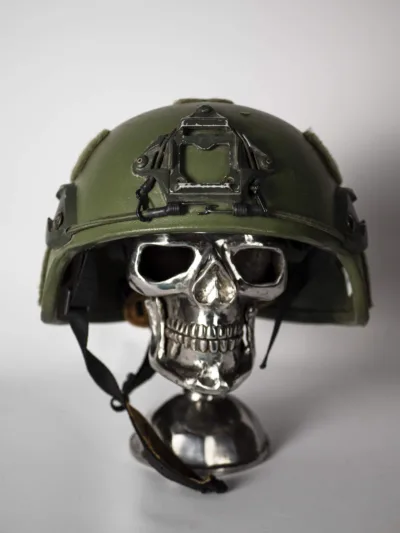
The country of the terrorists is developing its defense industry. If at the beginning of the war, we observed enemy soldiers wearing steel helmets from the 1968 model, now (in […]
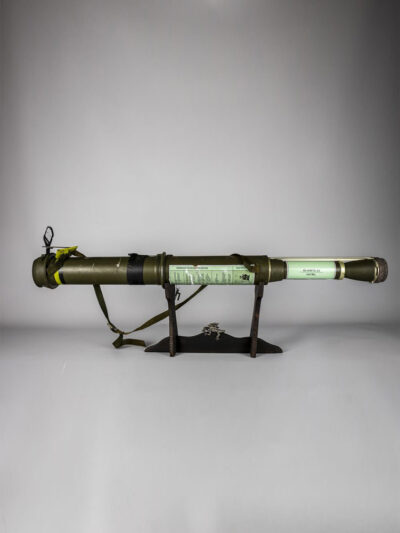
We really into this rocket launcher. It is made of duralumin and feels comfortable to hold. The RPG-75 is a Czechoslovakian disposable handheld anti-tank rocket launcher designed to combat tanks, […]

40 mm grenade Box Standard NATO ammunition box for storing 40-millimeter grenades, with a capacity of 30 pieces. It is airtight, very convenient, and reliable, just like everything made to […]
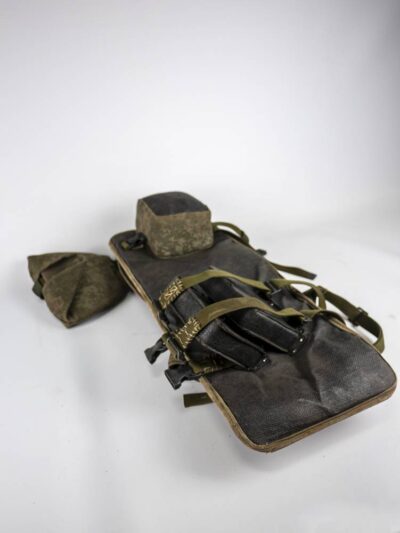
In our collection of trophies, we have backpacks for carrying a mortar. Designed to be carried by two soldiers, this tactical backpack is in good condition, worn out and no […]

